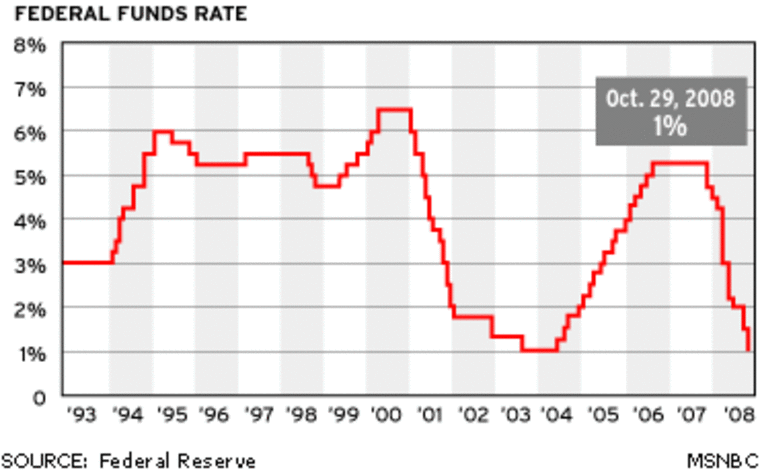A replay of 1994?
That’s one question facing Federal Reserve policy-makers when they meet Tuesday and try to determine how an economy accustomed to super-low interest rates will react to rising rates.
A decade ago, shock waves from rate increases contributed to financial disasters in Mexico, Orange County, Calif., and elsewhere.
Analysts do not expect that Fed Chairman Alan Greenspan and his colleagues will start raising rates this week. Many expect the central bank will start preparing the country for higher rates, in large part to avoid the mistakes of a decade ago.
“They want to be very cautious this time around because they want to avoid an outcome like 1994,” said David Jones, who has written four books on the Greenspan Fed.
In 1994, the Fed began a yearlong series of seven increases that would double an important rate to 6 percent. Since midyear, the Fed had kept its target for the federal funds rate — the interest that banks charge each other — at a then-low 3 percent.
The first increase came Feb. 4, 1994, and led to a huge sell-off on Wall Street. Before the Fed was done raising rates, the financial market fallout helped sink Orange County, the Mexican peso and a venerable Wall Street firm, Kidder Peabody & Co.
Today, a rebound in job growth and emerging signs of possible inflationary pressures have financial markets nervous that another long period of low interest rates is drawing to a close.
The funds rate is 1 percent, a 46-year low. It has been there since June and has not climbed above 2 percent for more than two years.
Even Greenspan’s oblique reference on April 20 about the possibility of higher rates was enough to send the Dow Jones industrial average plummeting, 120 points in a single day.
Since then, stocks have sagged. The Nasdaq composite index last week fell by 6.4 percent, its worst weekly performance since Oct. 18, 2002, which was near the low point of the bear market.
Many economists insist that the financial markets are overreacting to the possibility of higher rates and overlooking significant differences between 2004 and 1994.
Inflation is much lower than a decade ago, thanks in part to a boom in productivity, the amount of output per hour of work, which has kept a lid on labor costs.
Also, Greenspan and other Fed officials have acknowledged that their actions in 1994 were too aggressive.
“In 1994, they kept raising and raising rates, and the bond and mortgage markets pretty much melted,” said Sung Won Sohn, chief economist at Wells Fargo in Minneapolis.
“When they do start raising interest rates this time, I think they will take it slower and more cautiously and will give us plenty of warnings before they start,” he said.
Many analysts believe one of those warnings will come at Tuesday’s meeting, and it will take the form of a change in the wording of the Fed’s brief statement explaining its action.
The Fed in January and March pledged to be “patient” in leaving interest rates low. From August until then, the central bank had promised to leave rates low “for a considerable period.”
Beyond a change in the statement, no analyst is forecasting that the Fed will start raising interest rates this week.
The Fed’s June meeting is seen as the earliest time for a possible increase.
Whenever the Fed starts moving, analysts are looking for gradual moves of one-quarter of a percentage point and probably only two of those for a year.
They note that Fed board member Donald Kohn, in a recent speech, said “patient” referred not only to a slowness in starting to raise rates but to the speed at which rates would rise.
“Slow and gradual will be the pattern,” said David Wyss, chief economist at Standard & Poor’s in New York. “The Fed is not trying to hit the brakes. What they are trying to do is get their foot off the accelerator.”
Most analysts believe the overall economy will continue to show healthy growth although the red-hot housing market will cool a bit.
Diane Swonk, chief economist at Bank One in Chicago, said she was looking for the economy to grow at a rate of 4.5 percent this year and 4.1 percent in 2005.
“Interest rates are going to go up, but the Fed is going to do it gradually,” she said. “This economy is going to be very strong in 2004 and 2005.”
